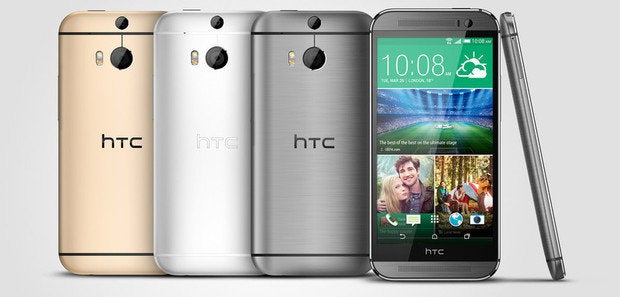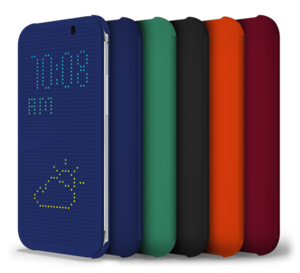HTC’s latest bid for smartphone relevance is a 5-inch hset called the HTC One (M8), parentheses all. At a Tuesday press event in New York, HTC CEO Chou announced the new smartphone, stressing smart industrial design, a more intelligent, gesture-driven user interface, what the company calls “another breakthrough camera.”
Key specs include a 440 ppi, 5-inch display; a 2.3GHz Snapdragon 801 processor paired with 2GB of RAM; a MicroSD slot for up to 128GB of removable storage, augmenting 32GB of onboard storage. The original One featured a 4.7-inch display, didn’t include any slot for extra storage.
The hset features a new Boomsound audio amplifier that provides 25 percent louder volume relative to the previous One, battery life has been increased by 40 percent thanks to a larger cell.

Available for online purchase today via AT&T, Verizon Sprint, the new One (M8) could be “in your hs as early as tomorrow,” says HTC. The price starts at $199. The T-Mobile version of the One (M8) will be available online in stores on April 11 for zero down $26.50 a month (for 24 months).
The new smartphone features the sixth version of HTC’s Sense user interface, along with a new iteration of BlinkFeed that allows for greater customization of content streams based on personal preferences. But the real stout features are certainly the new One’s cameras, gesture-sensing UI.
A new wide-angle front camera rings in at 5 megapixels, while new dual rear cameras offer depth-of-field bokeh effects for more professional-looking images. en you’re framing up a shot, you can simply tap on the portion of the scene you want in focus, the camera will deliver those results. Anchored by a 4.1-megapixel sensor (just like the original One mode), the dual-camera system also includes a manual mode with sliders for ISO, white balance more.

HTC’s new Dot View case lets you view manipulate content right through the protective cover.
And how’s this for a cool trick: st like with the most recent iones, you can shoot slo-motion videos, turn them into regular-speed videos with a dramatic, slow-mo sequence featured in the middle.
The One (M8) also adds new gesture controls to perform a variety of quick actions that would otherwise require fussy menu interactions. These include single-motion actions for going to BlinkFeed, accessing the widget panel, taking photos, answering calls. Double-tapping the screen unlocks the phone.
The original One’s chassis was about 70 percent metal, but HTC has upped that spec to 90 percent aluminum in a design that features a brushed gun-metal finish with hairline texturing. “Our competitors still use so much plastic,” said Chou in a clear dig at Samsung, “but we insist on giving you the best quality possible.”
The new chassis isn’t any slimmer than the previous One model. It’s even slightly taller, wider heavier. But the new One (M8) has more rounded edges, there’s now an optional Dot View case that superimposes a retro, dot-matrix-style grid on top of the phone’s screen. The case offers protection, but still allows you to view display content perform gesture controls, all without opening the cover. “Instead of getting in the way, it extends the experience,” HTC said.



















